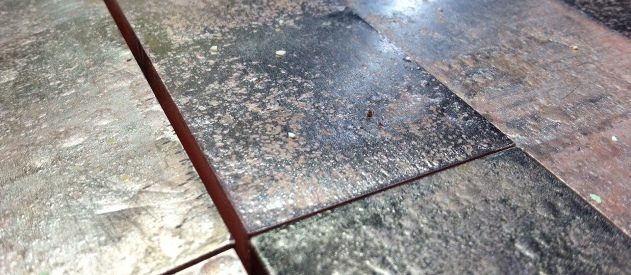Electroplating Problems
Have you ever had one of those weeks where things just don’t turn out the way you expected them to? Well this week, we have had some electroplating problems. For example, copper plating steel is one of those jobs that we could figuratively “do in our sleep” because it is so routine and simple. This week we have been working on plating hundreds of little flat-bar pieces. In conclusion, they have proven to be much more challenging than we anticipated. We now need to retrace our steps and see what went wrong.
Common Electroplating Problems…
Plating is a very precise science, working with metals on the molecular level, and for the companies that we work with, absolute perfection is a necessity. When things don’t go as expected, we have to take a step back and examine every aspect of the plating process to eliminate any number of variables.
In the case of our blistering copper, we determined that there were three possible causes:
1. Preparation & Contamination
2. Oxidation
3. Plating Rat
Preparation & Contamination
In terms of preparation, this is the most probable source of deviation. If even the smallest particles of oil or dust remain on the object’s surface at the time of submergence it can prevent proper bonding of the molecules. The result is then blistering or flaking of the plate layer.
At American Plating Company, we put every item through a process of dissolving any oily residue, removing previous plating, and cleaning off any dust particles. While this process is generally highly effective, there is always some margin of error.
Oxidation
Exposing metals to the environment begins a process of oxidation. Oxidizing brass, copper and silver are also know as“tarnishing”. Oxidizing steel it is known as rust. Any elements of oxidation that remain on an object at the time of exposure will result in areas of poor plating.
Steel can begin the process of oxidizing/rusting within an hour of elemental exposure, so at American Plating Company we transfer objects from preparation to the plating bath within minutes. This helps minimize the possibilities of incomplete bonding.
Plate Rate
In addition, influencing the actual plating process by solution/bath temperature and electrical currents is one of our tricks. While it is possible to increase the speed of plating by increasing the electrical current, doing so results in uneven and incomplete bonding of the metal molecules.
American Plating Company has been in business since 1944 and we’ve had plenty of time to discover the boundaries between plate rate and plate quality. Having identified those boundaries, we pride ourselves on producing quality workmanship, and often plate at rates well below the maximum possible speed.
Our Conclusion
We were undoubtedly disappointed with the way this first batch of copper-plated flat-bar turned out. However, after examining each element of the plating process and discussed this issue with the client, we believe that a solution may be in sight.
For more information on how to solve your electroplating problems call American Plating Company. Quality is our top priority!
Call us at (314) 776-0542.

